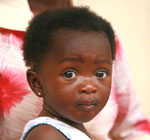July 2009
The Mma Bana study in Botswana explored the relative efficacy of two ARV regimens (Trizivir and Kalatera) for women with CD4 counts more than 200 cells/μL, taken from 26 weeks of pregnancy through six months of breastfeeding. The primary outcomes of interest were viral load suppression and mother-to-child transmission of HIV from birth through six months. A third arm contained women with CD4 counts less than 200 cells/μL that qualified for nevirapine-based treatment under current guidelines. Viral suppression less than 400 copies/mL was greater than 90% in all arms. HIV transmission during all periods was extremely low in all arms and not significantly different. Almost all transmission happened in utero among women who were on ART for shorter periods of time and had higher baseline viral loads. The cumulative rate of HIV transmission at six months was 1%. Only two infants were infected during breastfeeding. Lower rates of transmission in this study compared to Kesho Bora may be attributed to higher baseline CD4 counts, longer duration of HAART during pregnancy, and a 93% rate of exclusive breastfeeding through the time of breastfeeding cessation. The Mma Bana transmission rates were similar to those found in the previously published Amata study in Rwanda. In the Amata study only one infant became infected through breastfeeding when mothers took HAART from 28 weeks ante partum through six months of breastfeeding.
Visit the IAS 2009 website to learn more.
Date: Oct 1, 2009 | Category: Research highlights
